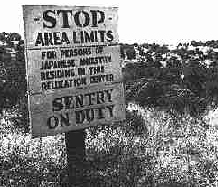|
Legislation frequently involves making classifications that either advantage or disadvantage one group of persons, but not another. States allow 20-year-olds to drive, but don't let 12-year-olds drive. Indigent single parents receive government financial aid that is denied to millionaires. Obviously, the Equal Protection Clause cannot mean that government is obligated to treat all persons exactly the same--only, at most, that it is obligated to treat people the same if they are "similarly circumstanced." Over recent decades, the Supreme Court has developed a three-tiered approach to analysis under the Equal Protection Clause. Most classifications, as the Railway Express and Kotch cases illustrate, are subject only to rational basis review. Railway Express upholds a New York City ordinance prohibiting advertising on commercial vehicles--unless the advertisement concerns the vehicle owner's own business. The ordinance, aimed at reducing distractions to drivers, was underinclusive (it applied to some, but not all, distracting vehicles), but the Court said the classification was rationally related to a legitimate end. Kotch was a tougher case, with the Court voting 5 to 4 to uphold a Louisiana law that effectively prevented anyone but friends and relatives of existing riverboat pilots from becoming a pilot. The Court suggested that Louisiana's system might serve the legitimate purpose of promoting "morale and esprit de corps" on the river. The Court continues to apply an extremely lax standard to most legislative classifications. In Federal Communications Commission v Beach (1993), the Court went so far as to say that economic regulations satisfy the equal protection requirement if "there is any conceivable state of facts that could provide a rational basis for the classification." Justice Stevens, concurring, objected to the Court's test, arguing that it is "tantamount to no review at all." Classifications
involving
suspect
classifications such as race, however, are subject
to closer scrutiny. A rationale for this closer
scrutiny was suggested by the Court in a famous
footnote in the 1938 case of Carolene Products
v. United States (see box at left). Usually,
strict scrutiny will result in invalidation of the
challenged classification--but not always, as
illustrated by Korematsu v. United States,
in which the Court upholds a military exclusion
order directed at Japanese-Americans during World
War II. Loving v Virginia produces a more
typical result when racial classifications are
involved: a unanimous Supreme Court strikes down
Virginia's miscegenation law. For more on
the Loving case, here is a link to a trailer for
HBO's 2012 documentary on the case:
http://www.traileraddict.com/trailer/the-loving-story/promo-trailer The Court also applies strict scrutiny to classifications burdening certain fundamental rights. Skinner v Oklahoma considers an Oklahoma law requiring the sterilization of persons convicted of three or more felonies involving moral turpitude ("three strikes and you're snipped"). In Justice Douglas's opinion invalidating the law we see the origins of the higher-tier analysis that the Court applies to rights of a "fundamental nature" such as marriage and procreation. Skinner thus casts doubt on the continuing validity of the oft-quoted dictum of Justice Holmes in a 1927 case (Buck v Bell) considering the forced sterilization of certain mental incompetents: "Three generations of imbeciles is enough." The
Court applies a middle-tier scrutiny (a standard
that tends to produce less predictable results
than strict scrutiny or rational basis scrutiny)
to gender and illegitimacy classifications.
Separate pages on this website deal with these
issues.
|
Cases
 Mildred and Richard Loving, who successfully challenged Virginia's miscegenation law. (UPI) Questions 2. Identify as many legitimate reasons as you can for the classification involved in Railway Express. 3. In identifying a justification for a challenged classification, should the Court consider (1) actual purposes for the classification, (2) all justifications now proffered by the state, or (3) all justifications proffered by the state plus those that the Court can dream up on its own? 4. What level of scrutiny do you believe would be appropriate in the Kotch case? Could you argue that the classification burdened a fundamental right to pursue own's chosen profession? Does the fact that one's ability to become a Louisiana riverboat captain turns on blood connections justify more than rational basis scrutiny? 5. Korematsu is the only Supreme Court decision purporting to apply strict scrutiny that results in a challenged classification disadvantaging a racial minority being upheld. How do you account for the outcome of this case? 6. Is Skinner better analyzed as an equal protection case or a substantive due process case? What about Loving? 7. Can you hypothesize a situation today in which a classification disadvantaging a racial minority might be upheld? |


